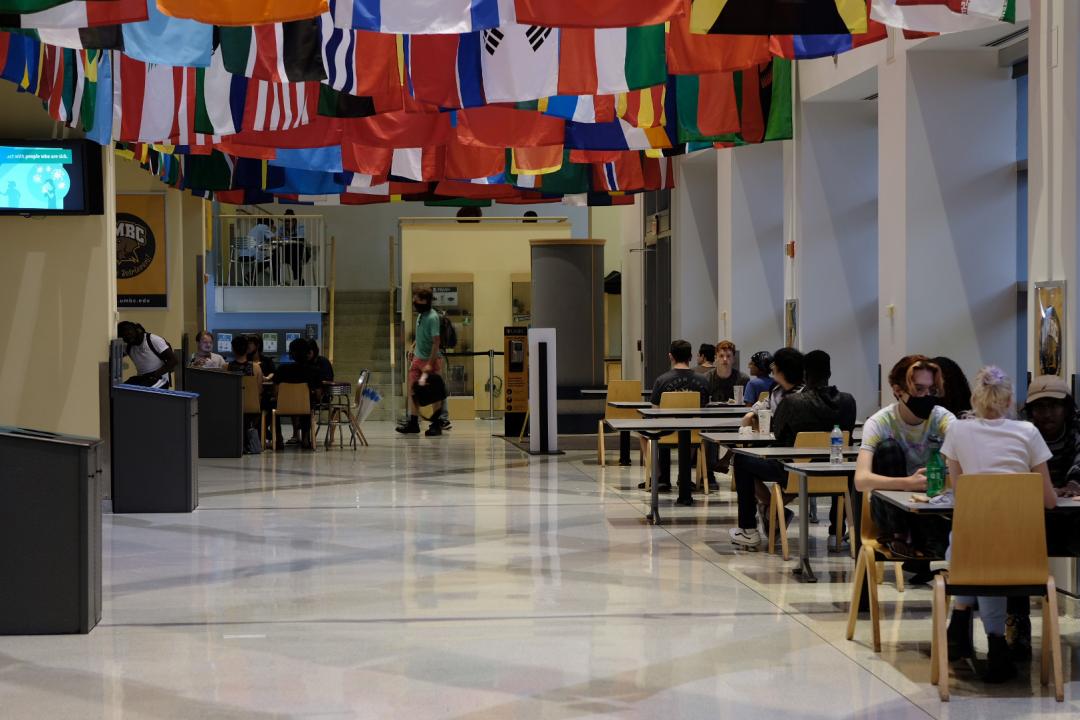Gallery offers excellent place for quiet contemplation
The gallery is often overlooked by some students, but those who take the time to visit may find something special.
It’s a shame that so many students often walk right past one of the most visually pleasing locations at UMBC: the AOK Gallery. While some students may be familiar with the plethora of video viewings, guest speakers and lunches held in the gallery, the space alone is worth a visit.
The gallery is a wide, dimly lit hall that sits in great contrast with the towering, sunlight streaked library atrium through which guests enter. The atmosphere is immediately different as well: instead of ice grinding in the smoothie machine and the constant chatter that characterizes the atrium, the gallery is as still and quiet as a cave. Minus the darkness, of course.
Soft light spills from the spotlights that border each exhibit, and pools beneath the displays. The walls, stretching stark white in every direction, are perfect backdrops for the massive canvases and photographs.
There are several benches in the gallery as well, and like the rest of the space, they are wide and flat. The fact that the benches do not have backs may seem austere to some, but in the gallery, a space of flat planes and clean lines, the lack of a back makes the benches not only functional, but unobtrusive as well.
The gallery eschews labels for text printed directly on the walls. Entering visitors are faced with a large photograph of an oil pipeline snaking its way through a valley, edged by elegant lettering that describes the gallery’s current exhibit: “Taxonomy of a Landscape,” by Victoria Sambunaris.
A description of “Taxonomy of a Landscape” is available on the gallery’s website, but visitors may be best served by simply un-tensing their muscles and letting the power of the images wash over them.
A cross-section of Sambunaris’s life, work and vision as an artist is featured in the over 1500 photographs that line one of the gallery’s walls. The photos were taken from her trips to Alaska, Hawaii and places in between.
The pictures are diverse: gas stations and frozen waterfalls, coniferous forests and karaoke machines. A particular image, once found in the collection, may be quickly lost again. As in reality, the experience of seeing can be fleeting. Stepping back, the collection is a massive quilt, textured with all of the colors of the earth and the sky.
Sambunaris’s photographs, along with other artifacts scattered about the gallery, give a perspective that we are often not afforded as students. Our gazes are always forward, to the next exam, the next paper or the next presentation.
Yet the future demands that we find a place for ourselves in the world, and this writer can think of few places better to begin looking than in one of Sambunaris’s vast landscapes.
Students, staff and faculty can view “Taxonomy of a Landscape” until Dec. 17.







